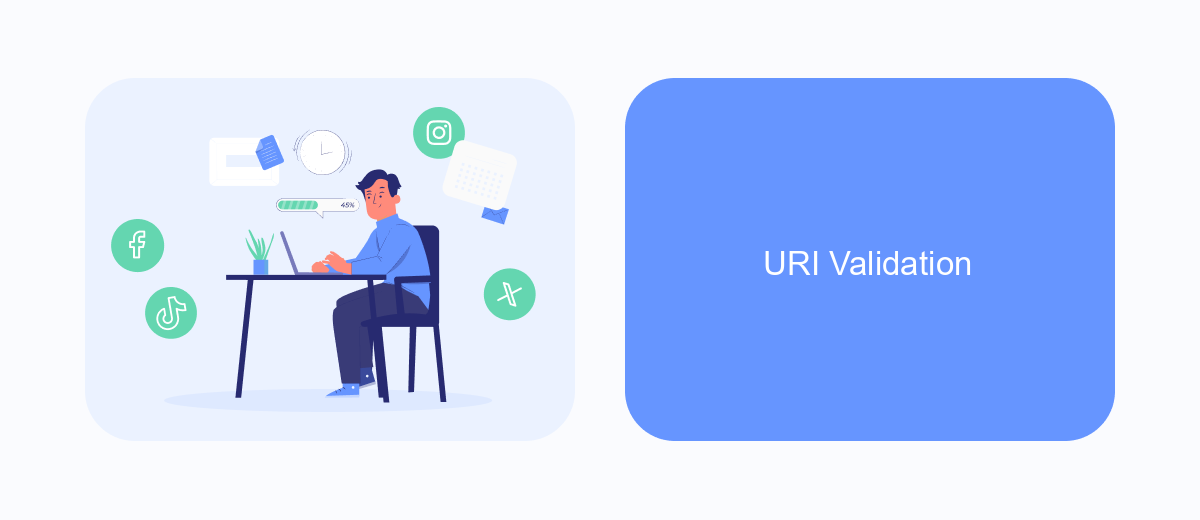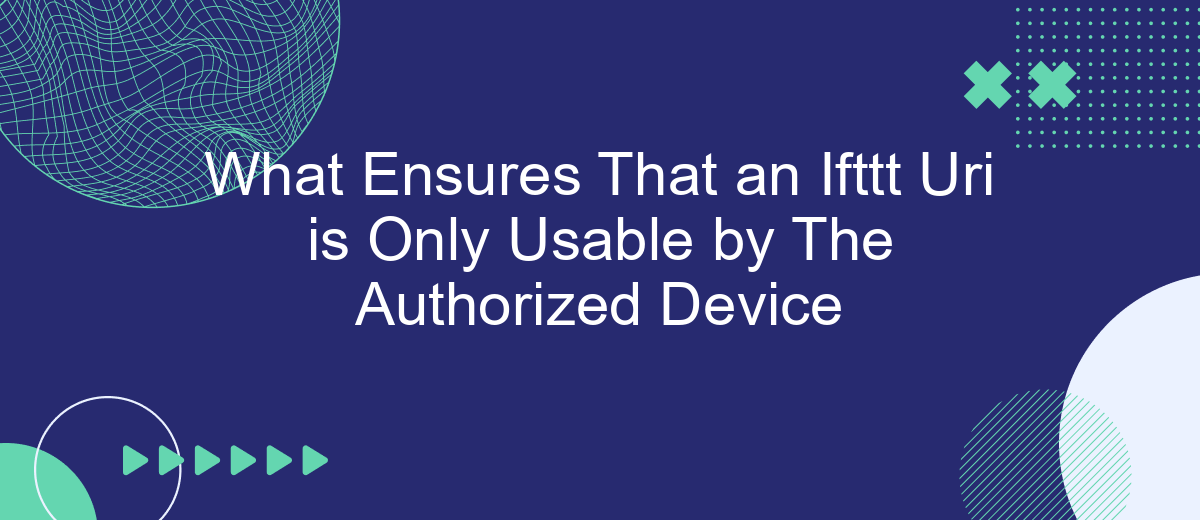In the digital age, ensuring that Internet of Things (IoT) devices communicate securely is paramount. This article explores the mechanisms that guarantee an IFTTT (If This Then That) URI is accessible only by authorized devices. By delving into authentication protocols, encryption techniques, and device-specific identifiers, we uncover how these elements collectively safeguard your smart ecosystem from unauthorized access.
Introduction
In the digital age, automation tools like IFTTT (If This Then That) have become indispensable for streamlining tasks and enhancing productivity. One crucial aspect of these tools is ensuring that the URIs (Uniform Resource Identifiers) used for triggering actions are secure and accessible only by authorized devices. This is particularly important for maintaining the integrity and security of the automated workflows.
- Authentication mechanisms
- Secure token generation
- Device-specific access controls
- Encryption protocols
Services like SaveMyLeads offer robust solutions for managing integrations securely. By leveraging advanced authentication and encryption methods, SaveMyLeads ensures that only authorized devices can access and execute the URIs. This not only safeguards the automation processes but also enhances the overall reliability of the integrations. Understanding these security measures is essential for anyone looking to optimize their automated workflows while maintaining a high level of security.
Authorization Flow

The authorization flow for ensuring that an IFTTT URI is only usable by the authorized device involves several key steps. First, when a user initiates a request, the device sends a unique identifier along with the request to the IFTTT server. This identifier is typically a token that has been previously generated and linked to the specific device during the initial setup process. The server then validates this token against its database to confirm the device's identity and authorization status.
Services like SaveMyLeads facilitate this process by offering seamless integration setups that handle token generation and validation automatically. By leveraging secure OAuth protocols, SaveMyLeads ensures that tokens are encrypted and securely stored, mitigating the risk of unauthorized access. Additionally, SaveMyLeads monitors and logs all access attempts, providing an extra layer of security and accountability. This comprehensive authorization flow ensures that only authorized devices can execute actions via the IFTTT URI, maintaining the integrity and security of the user's automated workflows.
Token Generation

Token generation is a critical step in ensuring that an IFTTT URI is only usable by the authorized device. The process involves creating unique tokens that authenticate and authorize devices to access specific services or APIs. SaveMyLeads, a service that helps automate and integrate various platforms, employs a robust token generation mechanism to secure its integrations.
- SaveMyLeads generates a unique token for each device during the initial setup.
- This token is securely stored on the device and the SaveMyLeads server.
- Whenever a request is made, the token is included in the header to verify the device's identity.
- The server checks the token against its records to ensure it matches the authorized device.
- If the token is valid, the request is processed; otherwise, it is rejected.
By employing this token-based authentication system, SaveMyLeads ensures that only authorized devices can utilize the IFTTT URIs. This adds an extra layer of security, preventing unauthorized access and ensuring the integrity of the automated workflows.
URI Validation

Ensuring that an IFTTT URI is only usable by the authorized device is critical for maintaining the security and integrity of automated workflows. This involves multiple layers of validation and authentication to confirm that the request is coming from a legitimate source.
One of the primary methods for validating URIs is through the use of secure tokens and API keys. These unique identifiers are issued to authorized devices and must be included in any request to the IFTTT service. Without the correct token or key, the request will be denied.
- Secure Tokens: Unique strings that authenticate the device.
- API Keys: Keys that grant access to specific services and endpoints.
- IP Whitelisting: Restricting access to known IP addresses.
- Two-Factor Authentication: Adding an extra layer of security.
Services like SaveMyLeads can help streamline the integration process by providing robust tools for managing these security measures. By using such services, users can ensure that their IFTTT URIs are protected and only accessible by authorized devices, thus safeguarding their automated workflows.
Security Considerations
Ensuring that an IFTTT URI is only usable by the authorized device involves multiple layers of security measures. One critical aspect is the implementation of OAuth 2.0, which provides secure authorization by allowing users to grant access to their resources without sharing credentials. This ensures that only devices with the correct tokens can interact with the IFTTT URI, reducing the risk of unauthorized access. Additionally, HTTPS encryption is employed to protect data in transit, ensuring that any communication between the device and the IFTTT service is secure from eavesdropping and tampering.
Another important consideration is the use of service-specific integrations, such as those provided by SaveMyLeads. This platform helps streamline the process of connecting various applications while maintaining robust security protocols. By leveraging SaveMyLeads, users can ensure that their IFTTT URIs are only accessible by authenticated devices, as the platform enforces strict security standards and regular audits. Furthermore, users should regularly update their security settings and be vigilant about monitoring access logs to detect and respond to any suspicious activity promptly.


FAQ
What ensures that an IFTTT URI is only usable by the authorized device?
How are API keys used to secure IFTTT URIs?
Can I restrict access to IFTTT URIs by IP address?
How does OAuth enhance the security of IFTTT URIs?
What role do HTTPS and SSL play in securing IFTTT URIs?
Use the SaveMyLeads service to improve the speed and quality of your Facebook lead processing. You do not need to regularly check the advertising account and download the CSV file. Get leads quickly and in a convenient format. Using the SML online connector, you can set up automatic transfer of leads from Facebook to various services: CRM systems, instant messengers, task managers, email services, etc. Automate the data transfer process, save time and improve customer service.
